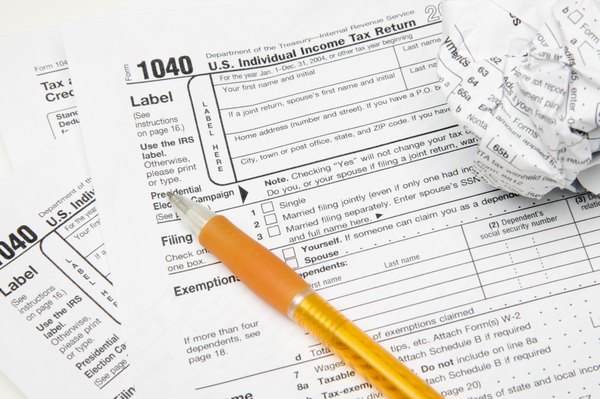How Long Do Capital Gains & Losses Carry Forward?
Gains and losses have significant impact on your tax bill.
Creatas/Creatas/Getty Images
Capital gains and losses get their own section and extra forms when you file your tax return. Gains can be taxed at a different rate than the rest of your income, and those unfortunate losses get put to good use as tax write-offs. You have a significant amount of control when gains and losses are reported on your taxes.
Tip
You can't carry capital gains forward since you have to report them for the year they're realized, but you can usually carry capital losses forward to use up to $3,000 a year as a tax write-off against your income. There are some special rules to follow though.
Realizing Investment Results
IRS rules do not require you to report any gains or losses from investments until an investment is sold and you have "realized" the gain or loss. This means you control when a gain or loss is reported on your taxes. You can decide to hold on to a profitable investment for years and never report the gain by never selling the investment.
With losses, the ability to time a loss allows you to get the maximum benefit out of the loss write-off. A gain must be declared on your taxes for that year after it's realized, and there is no carry forward for capital gains.
Offsetting Gains With Losses
Capital losses must first be used to offset any capital gains you realized during the year. Only if you have more losses than gains can you use the losses as a write-off against your other income. Some tax planning in the timing of your sales can help reduce the tax burden of windfall profits. For example, if you have a big capital gain for the year, it may be appropriate to take some losses from other investments to reduce the taxes on the gain.
Carrying Losses Forward
You can use a maximum of $3,000 of capital losses each year as a write-off against income other than capital gains. If your losses are greater than your gains by more than $3,000, the extra losses above the $3,000 limit can be carried forward to future tax years. In the next tax year, the carry forward loss would again be first used against capital gains, and another $3,000 of excess would reduce other income. For a large loss and no capital gains, your loss will carry forward indefinitely with a $3,000 reduction in the carry amount each year until it reaches zero.
Capital Gains Distributions
The one type of capital gains in which you do not control the timing is capital gains distributions from mutual funds. A fund is required to pay out the gains it realizes on the fund portfolio at least once a year. Mutual funds do not pass through capital losses. Capital gains distributions from a fund are reported in the same manner as other gains and can be offset by losses from your other investments.
References
Writer Bio
Tim Plaehn has been writing financial, investment and trading articles and blogs since 2007. His work has appeared online at Seeking Alpha, Marketwatch.com and various other websites. Plaehn has a bachelor's degree in mathematics from the U.S. Air Force Academy.

